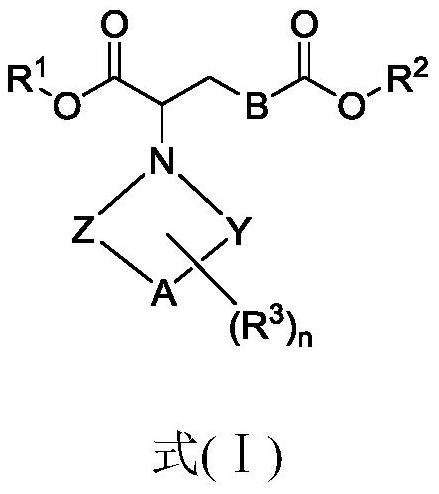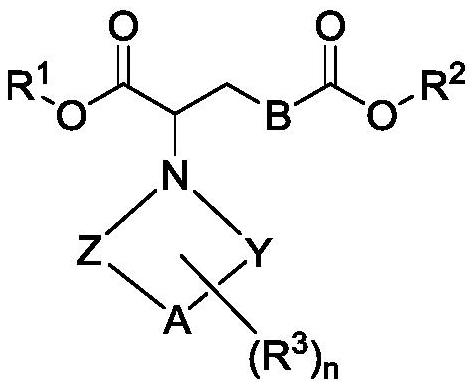Application of 2-cyclic amino fatty diacid derivatives in the preparation of animal feed additives
A technology of cyclic amino fats and derivatives, which is applied in the field of application of 2-cyclic amino fatty diacid derivatives in the preparation of animal feed additives, and can solve the problems that the use of compounds is rarely reported
- Summary
- Abstract
- Description
- Claims
- Application Information
AI Technical Summary
Problems solved by technology
Method used
Image
Examples
Embodiment 1
[0151] Example 1 The effect of 2-cyclic amino fatty acid derivatives on the performance of pigs
[0152] 300 65-day-old "Du Dachang" ternary hybrid lean piglets with similar body weight were randomly divided into 10 treatment groups with 3 replicates in each group, 10 pigs in each replicate, half male and female. The pigpen and utensils were disinfected before the test. During the test period, the pigs were kept in separate pens under the same feeding and management conditions. During the experiment, the experimental pigs had free access to food and water, and were fed twice a day. Each experimental group was divided into control group (group 1) and experimental groups 2-10. Among them, the control group was only given the basal diet, and the experimental groups 2 to 10 were respectively given the diets supplemented with 100 ppm of different 2-cyclic amino aliphatic diacid derivatives on the basis of the basal diet, as shown in Table 1.
[0153] During the whole feeding pro...
Embodiment 2
[0164] Example 2 The effect of 2-cyclic amino fatty acid derivatives on the performance of broilers
[0165]The experiment adopted a single-factor randomization design. 960 1-day-old broiler chickens with an average body weight of 50 g were selected and randomly divided into 10 treatment groups, with 6 replicates in each group, half male and female, and 16 replicates per replicate. Three yellow feather broilers. The chicken house and utensils were disinfected before the test. During the experimental period, cages were raised under the same feeding and management conditions in the same chicken house. The basal diet is mainly based on corn-soybean meal, and other antioxidants and growth promoters are not added during the whole feeding process. Each experimental group was divided into control group (group 1) and experimental groups 2-10. The control group was only given the basal diet, and 50ppm of different 2-cyclic amino aliphatic diacid derivatives were added to the basal d...
Embodiment 3
[0173] Example 3 Application of 2-Cyclic Amino Fatty Acid Derivatives in Fish Feed
[0174] The experimental fish used were grass carp, which was carried out by the aquatic farm of Guangzhou Inset Test Field. Healthy, lively and consistent size grass carp fingerlings were raised in large cages for 4 weeks before being used for formal breeding experiments. The experimental system was small floating cages. Small cages and temporary cages are placed in a 3500m test site 2 In the pond, the depth of the pond is about 1.5m, and the pond water is fully aerated bottom water. During the experiment, 420 grass carp that had been starved for 1 day were randomly divided into 7 groups, each group was set up with 4 replicates, and 15 fish were placed in each replicate. . Each experimental group was divided into control group (group 1) and experimental groups 2-7. The experimental feed was prepared by itself, in which the control group was only given the basal diet, and the experimental g...
PUM
 Login to View More
Login to View More Abstract
Description
Claims
Application Information
 Login to View More
Login to View More - R&D
- Intellectual Property
- Life Sciences
- Materials
- Tech Scout
- Unparalleled Data Quality
- Higher Quality Content
- 60% Fewer Hallucinations
Browse by: Latest US Patents, China's latest patents, Technical Efficacy Thesaurus, Application Domain, Technology Topic, Popular Technical Reports.
© 2025 PatSnap. All rights reserved.Legal|Privacy policy|Modern Slavery Act Transparency Statement|Sitemap|About US| Contact US: help@patsnap.com



